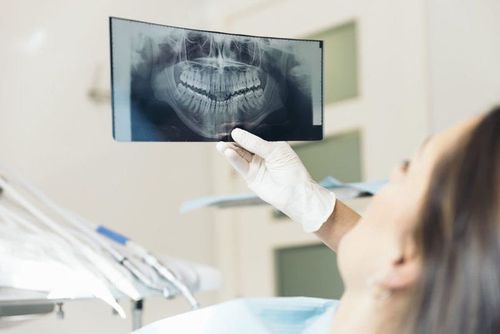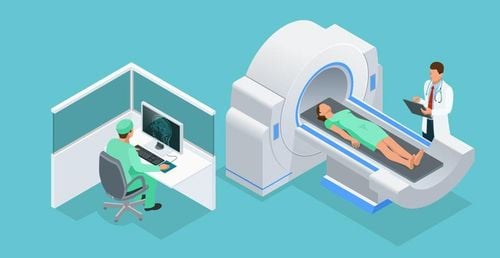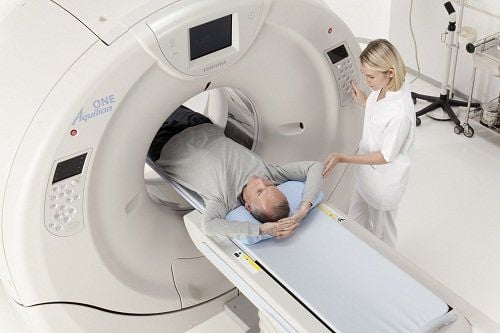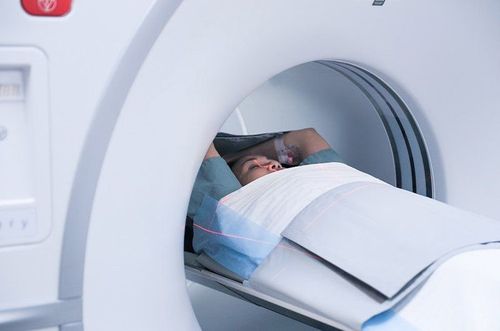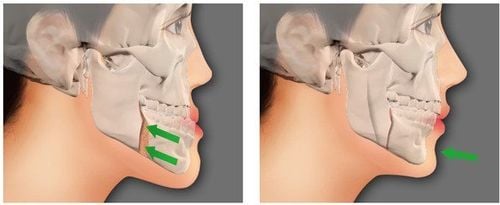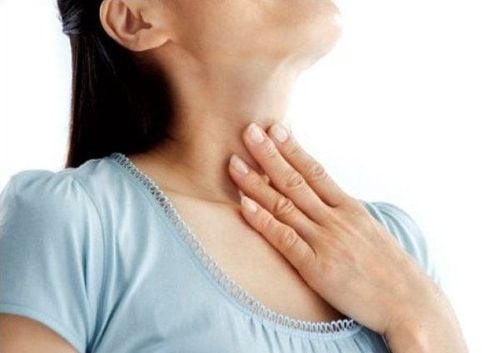This is an automatically translated article.
The article is expertly consulted by Master, Doctor Nguyen Thi Mai Anh - Doctor of Radiology - Department of Diagnostic Imaging and Nuclear Medicine - Vinmec Times City International General Hospital.Computed tomography (CT) scan of the face with 3D rendering is widely used in the diagnosis and treatment of maxillofacial pathology. Simple, non-invasive imaging technique has high value in disease diagnosis.
1. Meaning of facial computed tomography using 3D images
Maxillofacial computed tomography has 3D rendering without using contrast agent for the purpose of examining the pathology of the maxillofacial region, rendering in a three-dimensional plane to help diagnose and monitor the progression of the disease.In addition, 3D computed tomography is also used in surgery, shaping the maxillofacial region. Some people are born with an abnormal structure of the face and jaw, causing difficulties in daily activities and affecting aesthetics. From taking and 3D imaging to detect abnormal anatomical images, from which to plan appropriate treatment.
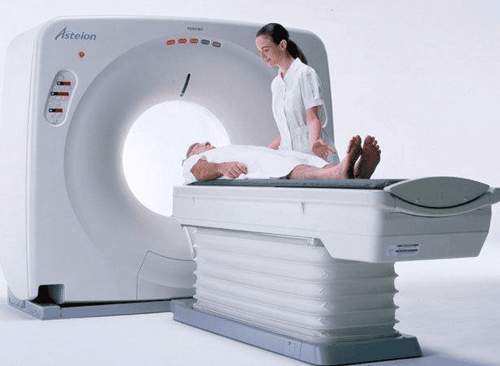
Chụp cắt lớp vi tính cho phép chẩn đoán chính xác những tổn thương liên quan đến hàm mặt
2. Indications and contraindications for 3D modeling maxillofacial computed tomography
Indications for 3D rendering computed tomography:Injury to the maxillofacial region. Congenital abnormalities of the maxillofacial region. Maxillofacial sinus disease. Contraindications: This method does not use contrast, so there are no absolute contraindications. With this method there are only relative contraindications.
Pregnant women, especially pregnant in the first 3 months, need to consider carefully before taking pictures. When taking photos, you must have a lead shirt to cover the abdomen. Small children when taken can cause some effects on the development of children.
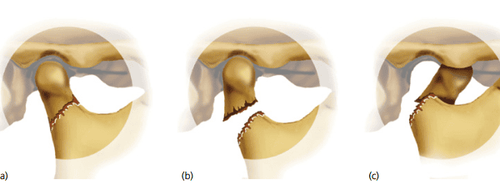
Bệnh nhân chấn thương vùng hàm mặt được chỉ định chụp cắt lớp vi tính
3. The procedure of facial computed tomography with 3D rendering without contrast injection
3.1 Preparation
Performer: To take computed tomography film of the maxillofacial region, it is necessary to have a team of doctors and technicians specializing in imaging.Means used to take computed tomography of the maxillofacial region include:
Multi-segment computed tomography machine. Film, photo printer and image storage system. Patients:
Patients are clearly explained how to take pictures and some possible complications when taking pictures so that they can coordinate with the photographer. Remove items that may cause image noise or affect image quality such as earrings, necklaces, hairpins, etc. (if any) The patient is overstimulated, anxious and afraid or the child is young. Small children can move, do not coordinate when taking pictures: Give sedatives as prescribed by the treating doctor before taking pictures.
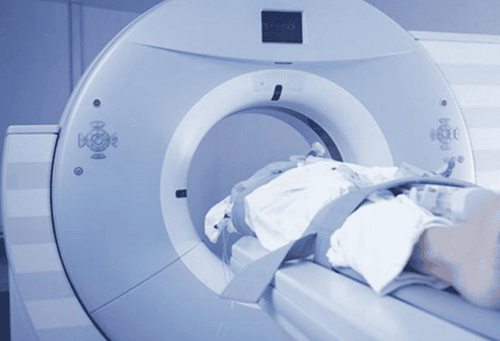
Hình ảnh máy chụp cắt lớp vi tính
3.2 Steps to take
Step 1: Take a cross-sectional shotPatient position: The patient is lying on his back on the bed, in the middle of the head, when taking the picture, it is necessary to lie still, do not move when taking the picture because it causes noise. Positioning is performed, the shooting plane is parallel to the hard palate. Shot in the horizontal direction from the lower border of the mandible to the superior border of the orbit. The thickness of each slice is 3mm. Spiral shooting aims to create shapes in directions. Step 2: After shooting in the cross-sectional direction, reproduce the image in the horizontal orientation but ensure the same good image quality as in the cross-sectional direction. From there, 3D reconstruction and rendering.
Step 3: Determine the standard image and print the result in both horizontal and vertical reconstruction directions, 3D reconstruction in both bone and software windows.
3.3 Evaluation of results
The doctor reads the results, describes the lesion: The location of the lesion, the structure of the lesion, the size, extent of the lesion's spread... Compare computed tomography and clinical images Provide orientations diagnose and the treating physician creates the treatment direction. At the same time, it is possible to suggest other examinations to coordinate. The doctor can give more professional advice to the patient if required.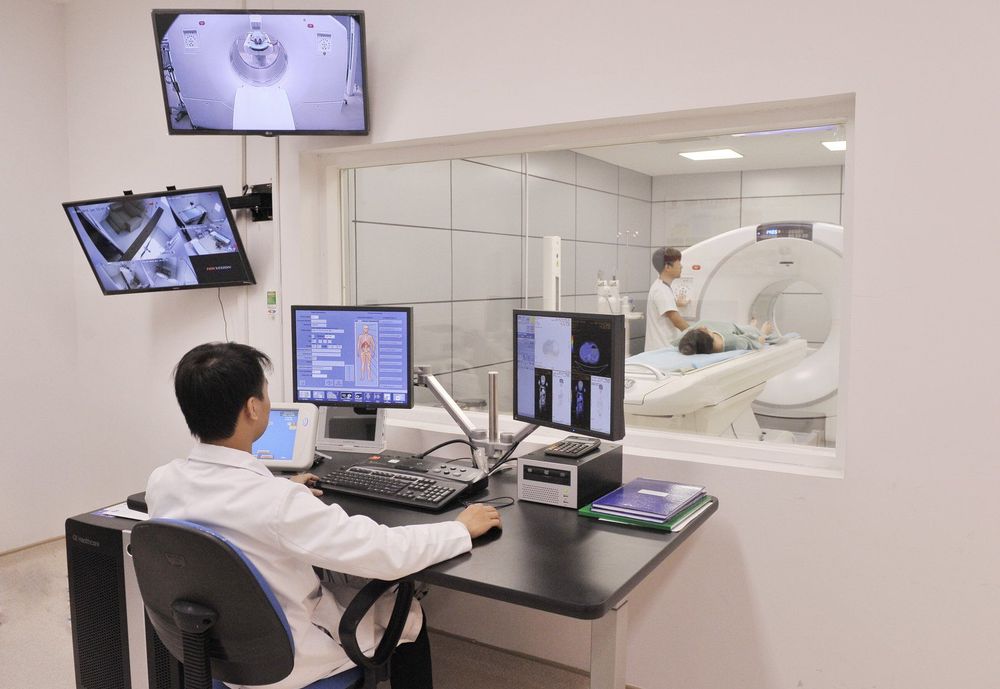
Hình ảnh chụp cắt lớp vi tính được xử lý qua phần mềm
4. Accidents and how to handle accidents when shooting
The method of computed tomography of the maxillofacial region has 3D rendering without contrast injection, so there are no complications.However, sometimes there may be some cases such as:
Young children may not cooperate during the shooting process such as crying, moving a lot affecting the image quality or some people are too nervous , scared to shoot. It can be taken while the child is sleeping, using sedatives or sometimes under anesthesia depending on the case. Effects on pregnant women: Due to the use of X-rays during the scan, there is a risk of affecting the development of the fetus. Therefore, if you are pregnant, you need to tell your doctor, to weigh the risks, benefits and protective measures when taking a scan. Above is the procedure of computerized tomography with 3D rendering without contrast injection. The imaging procedure is quite simple, non-invasive, and has high diagnostic value in maxillofacial pathology. However, it is necessary to have a multi-sequence scanner and it is important to accurately diagnose the disease that it is necessary to have a team of good doctors who read the film to limit missed lesions.
Master, Doctor Nguyen Thi Mai Anh has nearly 10 years of experience in the field of diagnostic imaging, especially in imaging breast and thyroid cancer. Received formal training at Thai Binh Medical University and specialized postgraduate training at Hanoi Medical University. Currently, the doctor is a radiologist at Vinmec Times City International General Hospital.
To register for examination and treatment at Vinmec International General Hospital, you can contact Vinmec Health System nationwide, or register online HERE.
SEE MORE
Maxillofacial computed tomography: What you need to know The procedure of computed tomography of the face with contrast injection in the axial and coronal planes What is a CT scan? In which cases need contrast injection?




